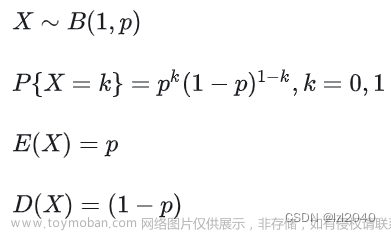首先需要maven配置
<dependency>
<groupId>org.springframework.boot</groupId>
<artifactId>spring-boot-starter-websocket</artifactId>
<version>2.1.3.RELEASE</version>
</dependency>然后加上配置类
这段代码是一个Spring配置类,主要作用是注册WebSocket端点,让使用了`@ServerEndpoint`注解声明的WebSocket端点能够自动注册并生效。具体来说:
- `@Configuration`注解表明这是一个配置类,Spring会自动扫描并加载这个配置类。
- `@Bean`注解标记了`serverEndpointExporter()`方法,这个方法返回一个`ServerEndpointExporter`实例。
- `ServerEndpointExporter` 是一个特殊的Spring Bean,它的作用是自动注册使用`@ServerEndpoint`注解声明的WebSocket端点。
简单来说,通过这段代码配置,Spring会扫描项目中使用`@ServerEndpoint`注解声明的WebSocket端点,并自动注册这些端点,使它们能够被正确地映射和使用。
总的来说,这个配置类的作用是为WebSocket端点的自动注册提供支持,简化了WebSocket端点的配置过程,让开发者更方便地使用WebSocket功能。文章来源:https://www.toymoban.com/news/detail-847126.html
import org.springframework.context.annotation.Bean;
import org.springframework.context.annotation.Configuration;
import org.springframework.web.socket.server.standard.ServerEndpointExporter;
@Configuration
public class WebSocketClientConfig {
/**
* ServerEndpointExporter 作用
*
* 这个Bean会自动注册使用@ServerEndpoint注解声明的websocket endpoint
*
* @return
*/
@Bean
public ServerEndpointExporter serverEndpointExporter() {
return new ServerEndpointExporter();
}
}最后加上主程序文章来源地址https://www.toymoban.com/news/detail-847126.html
@ServerEndpoint(value = "/imserver/{username}")
@Component
public class WebSocketServer {
private static final Logger log = LoggerFactory.getLogger(WebSocketServer.class);
/**
* 记录当前在线连接数
*/
public static final Map<String, Session> sessionMap = new ConcurrentHashMap<>();
/**
* 连接建立成功调用的方法
*/
@OnOpen
public void onOpen(Session session, @PathParam("username") String username) {
sessionMap.put(username, session);
log.info("有新用户加入,username={}, 当前在线人数为:{}", username, sessionMap.size());
JSONObject result = new JSONObject();
JSONArray array = new JSONArray();
result.set("users", array);
for (Object key : sessionMap.keySet()) {
JSONObject jsonObject = new JSONObject();
jsonObject.set("username", key);
array.add(jsonObject);
}
sendAllMessage(JSONUtil.toJsonStr(result));
}
/**
* 连接关闭调用的方法
*/
@OnClose
public void onClose(Session session, @PathParam("username") String username) {
sessionMap.remove(username);
log.info("有一连接关闭,移除username={}的用户session, 当前在线人数为:{}", username, sessionMap.size());
}
/**
* 收到客户端消息后调用的方法
* 后台收到客户端发送过来的消息
* onMessage 是一个消息的中转站
* 接受 浏览器端 socket.send 发送过来的 json数据
* @param message 客户端发送过来的消息
*/
@OnMessage
public void onMessage(String message, Session session, @PathParam("username") String username) {
log.info("服务端收到用户username={}的消息:{}", username, message);
JSONObject obj = JSONUtil.parseObj(message);
String toUsername = obj.getStr("to");
String text = obj.getStr("text");
Session toSession = sessionMap.get(toUsername);
if (toSession != null) {
JSONObject jsonObject = new JSONObject();
jsonObject.set("from", username);
jsonObject.set("text", text);
this.sendMessage(jsonObject.toString(), toSession);
log.info("发送给用户username={},消息:{}", toUsername, jsonObject.toString());
} else {
log.info("发送失败,未找到用户username={}的session", toUsername);
}
}
@OnError
public void onError(Session session, Throwable error) {
log.error("发生错误");
error.printStackTrace();
}
/**
* 服务端发送消息给客户端
*/
private void sendMessage(String message, Session toSession) {
try {
log.info("服务端给客户端[{}]发送消息{}", toSession.getId(), message);
toSession.getBasicRemote().sendText(message);
} catch (Exception e) {
log.error("服务端发送消息给客户端失败", e);
}
}
/**
* 服务端发送消息给所有客户端
*/
private void sendAllMessage(String message) {
try {
for (Session session : sessionMap.values()) {
log.info("服务端给客户端[{}]发送消息{}", session.getId(), message);
session.getBasicRemote().sendText(message);
}
} catch (Exception e) {
log.error("服务端发送消息给客户端失败", e);
}
}
}到了这里,关于WebSocketServer后端配置,精简版的文章就介绍完了。如果您还想了解更多内容,请在右上角搜索TOY模板网以前的文章或继续浏览下面的相关文章,希望大家以后多多支持TOY模板网!











